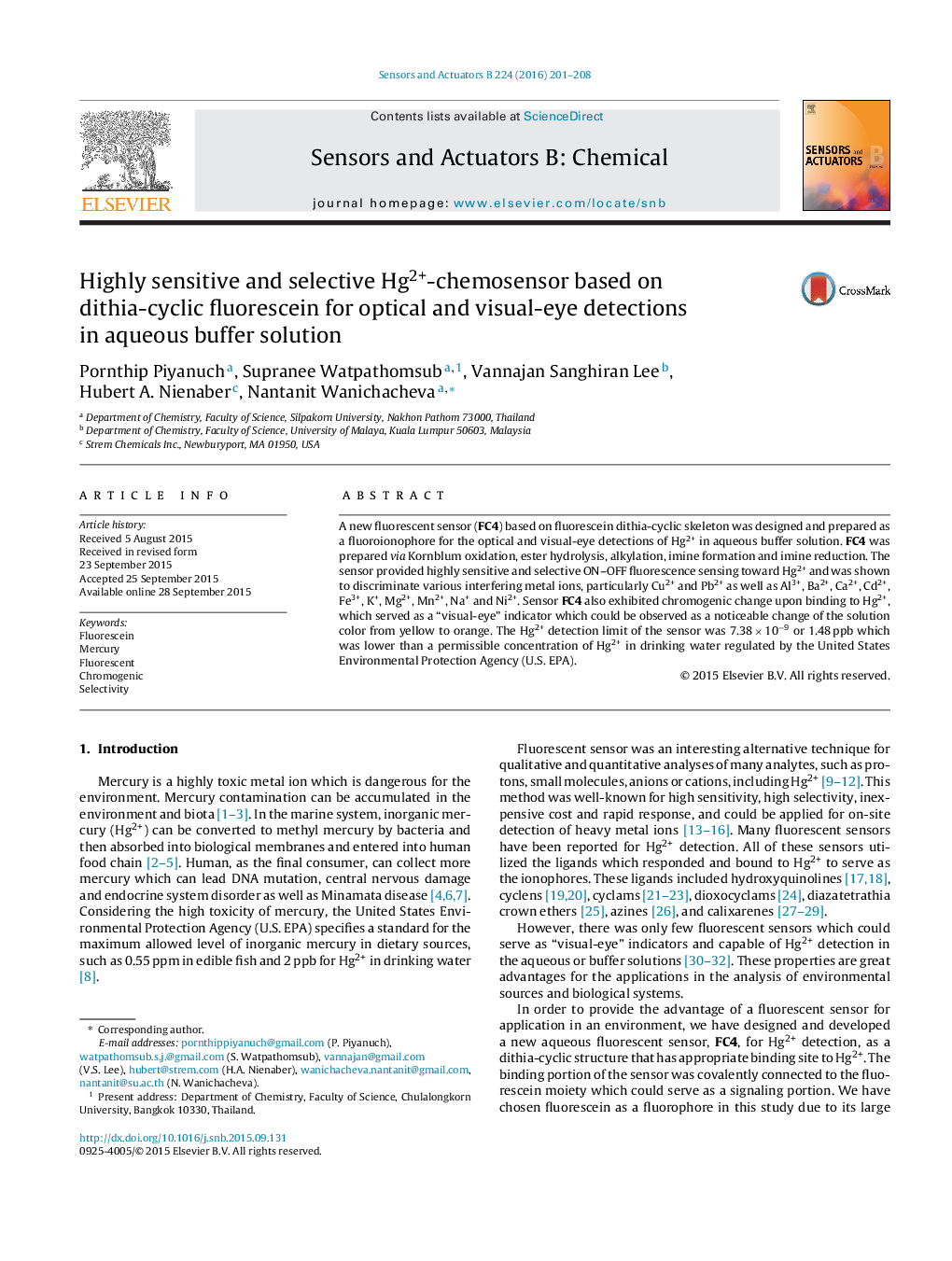| Article ID | Journal | Published Year | Pages | File Type |
|---|---|---|---|---|
| 750478 | Sensors and Actuators B: Chemical | 2016 | 8 Pages |
•New sensor based on fluorescein dithio-cyclic skeleton was prepared.•Sensor can utilize in aqueous buffer solutions.•Sensor binds to Hg2+, indicated by fluorescence quenching and color change.•Sensor is a Hg2+ “visual-eye” indicator by color change from yellow to orange.•Sensor shows high Hg2+-sensitivity and selectivity with detection limit of 1.5 ppb.
A new fluorescent sensor (FC4) based on fluorescein dithia-cyclic skeleton was designed and prepared as a fluoroionophore for the optical and visual-eye detections of Hg2+ in aqueous buffer solution. FC4 was prepared via Kornblum oxidation, ester hydrolysis, alkylation, imine formation and imine reduction. The sensor provided highly sensitive and selective ON–OFF fluorescence sensing toward Hg2+ and was shown to discriminate various interfering metal ions, particularly Cu2+ and Pb2+ as well as Al3+, Ba2+, Ca2+, Cd2+, Fe3+, K+, Mg2+, Mn2+, Na+ and Ni2+. Sensor FC4 also exhibited chromogenic change upon binding to Hg2+, which served as a “visual-eye” indicator which could be observed as a noticeable change of the solution color from yellow to orange. The Hg2+ detection limit of the sensor was 7.38 × 10−9 or 1.48 ppb which was lower than a permissible concentration of Hg2+ in drinking water regulated by the United States Environmental Protection Agency (U.S. EPA).
Graphical abstractFigure optionsDownload full-size imageDownload as PowerPoint slide
